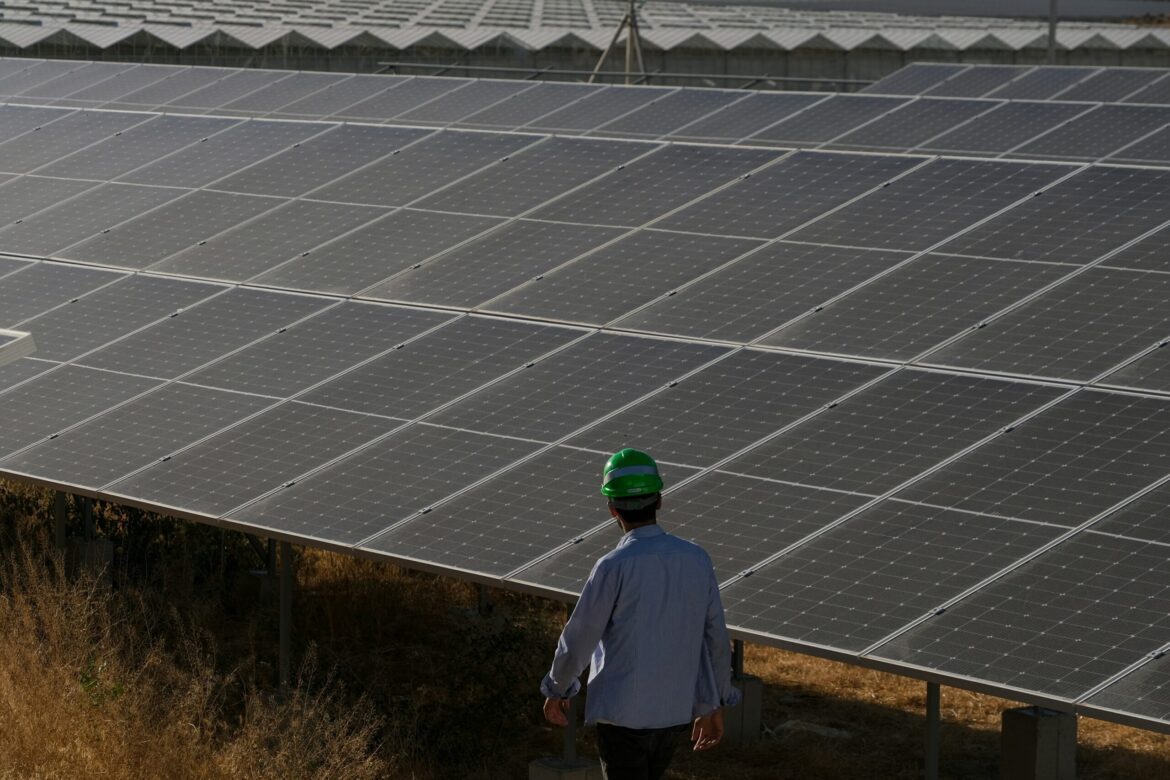In a landmark achievement for the United States’ clean energy transition, August 2023 saw solar and wind power collectively surpass coal as the leading source of electricity generation in the country. This pivotal moment marked a significant shift in the U.S. energy landscape, as renewable energy sources continued to gain ground, driven by technological advancements, favorable policies, and growing environmental concerns.
According to the U.S. Energy Information Administration (EIA), solar and wind energy accounted for more than 25% of total electricity generation in the U.S. in the first half of 2023, outpacing coal’s share, which had dwindled to around 22%. This shift was seen as a major victory for the U.S. energy sector and a clear sign of the nation’s growing commitment to reducing carbon emissions and combating climate change.
The rise of renewable energy sources has been a key focus of U.S. policy in recent years. Under the Biden administration, the federal government has pushed aggressively to invest in clean energy technologies through initiatives like the Inflation Reduction Act, which allocated billions of dollars in tax credits and incentives for solar, wind, and other renewable energy projects. These efforts, combined with the continued decrease in the cost of solar panels and wind turbines, helped propel the country closer to its renewable energy goals.
In August 2023, the success of solar and wind power was especially evident in states like Texas, California, and Iowa, where wind and solar farms had become a central part of the energy mix. Texas, traditionally known for its oil and gas production, had emerged as the nation’s leader in wind power, with the state’s wind farms generating nearly 30% of its electricity. Meanwhile, California continued to set records in solar energy production, with its vast network of solar panels making up a significant portion of the state’s electricity supply during peak hours.
One of the most exciting developments in August was the expansion of offshore wind energy projects. The U.S. East Coast saw the groundbreaking of multiple offshore wind farms, with large-scale projects in Massachusetts and New Jersey beginning their first phases of construction. These projects were expected to provide substantial amounts of clean energy while creating thousands of new jobs in the renewable energy sector. With continued investments in offshore wind, the U.S. was positioning itself to become a global leader in this emerging energy market.
Behind the scenes, technological innovations also played a crucial role in accelerating the growth of renewable energy. In particular, advancements in energy storage systems, such as large-scale batteries, allowed for better management of the intermittent nature of solar and wind energy. These systems allowed electricity generated during sunny or windy days to be stored and used during periods of low production, ensuring a steady and reliable supply of renewable power. As energy storage technology continued to improve, it became increasingly feasible for the U.S. to rely more heavily on solar and wind without compromising grid stability.
The economic impact of this renewable energy growth was substantial. In August 2023, the solar and wind industries employed over 500,000 people nationwide, with job growth continuing to accelerate. As large-scale projects expanded across the country, demand for skilled workers in fields such as engineering, construction, and project management also increased. Many of these jobs were located in rural areas, where wind farms and solar installations were being built, providing a much-needed economic boost to local communities.
The transition from coal to renewables also had significant environmental implications. The U.S. power sector has long been one of the largest sources of greenhouse gas emissions, primarily due to the use of coal-fired power plants. By surpassing coal with cleaner energy sources, the U.S. was making measurable progress in its effort to reduce carbon emissions and meet its climate targets under the Paris Agreement. As more coal plants were retired or converted to natural gas, the nation’s overall carbon footprint was expected to continue shrinking.
In addition to the environmental benefits, the rise of renewable energy was reshaping the geopolitical landscape. As the U.S. took a leading role in renewable energy production, it was positioning itself to compete more effectively in the global energy market, reducing its reliance on imported fossil fuels and increasing energy independence. Countries around the world were watching closely as the U.S. transitioned toward a more sustainable energy future, and many were adopting similar strategies to accelerate their own clean energy transitions.
Despite the overall success of renewable energy in 2023, challenges remained. Grid infrastructure in some regions of the U.S. was still not fully equipped to handle the increasing share of renewable energy, leading to occasional disruptions and energy shortages during extreme weather events. Additionally, fossil fuel industries and certain political groups continued to resist the pace of the transition, arguing that the shift to renewables could harm jobs in traditional energy sectors.
However, by August 2023, the momentum behind renewable energy in the U.S. was undeniable. The combination of federal policy support, declining technology costs, and growing public demand for cleaner energy had created a perfect storm for the rise of solar and wind power. As these clean energy sources surpassed coal, it marked a defining moment in the nation’s energy transition, one that would have lasting effects on the environment, economy, and the future of the U.S. power grid.
Looking forward, experts predicted that the U.S. would continue to build on this momentum in the coming years. With more investments in storage technology, grid modernization, and offshore wind, the nation was on track to further reduce its reliance on fossil fuels and move closer to a sustainable, renewable-powered future. The transition away from coal, while still a work in progress, represented a significant milestone in America’s energy evolution—one that would leave a lasting legacy for generations to come.


